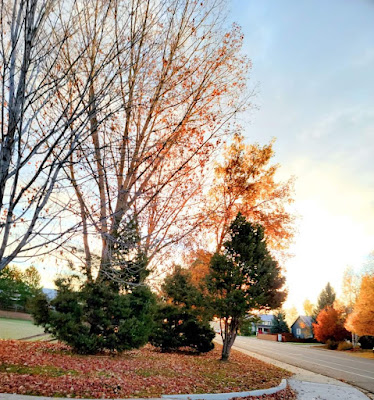It’s like giving your garden a seasonal treat. Autumn leaves are one of the best sources of organic materials around. Packed with organic material, carbon and other nutrients, autumn leaves serve as a natural soil amendment, an organic mulch and a compost pile ingredient.
Bagging leaves and throwing them in the trash creates a lot of unnecessary waste. These same autumn leaves could be used to make your crops grow better, by improving your soil.
It’s important to remember that improving your garden soil is something that needs to happen on an ongoing basis. Continuous improvement is the way to ensure soil health, structure and fertility, all of which lead to improved crop yields.
Good things happen when you add organic material to your vegetable garden on a regular basis. Clay soils become more workable, sandy soils retain water more effectively, earth worm populations go up, microbial activity increases and the health and balance of your soil improves. All this activity leads to bigger, healthier harvests.
Fall is an excellent time to work on improving your vegetable garden. The soil is warm and this time of year we have the added benefit of an abundance of fall leaves. Fall leaves are packed with organic matter and nutrients and can be utilized as an amendment, a mulch or in the compost pile.
An easy way to put fall leaves to work is to rake them up and scatter them across the surface of your garden or raised bed, then cover them with three to four inches of Earth Essentials Sheep, Peat and Compost. Through the course of the winter, the leaves will break down. Come spring, use your garden fork to work the resultant rich compost into your garden's soil.
Another option would be to incorporate the leaf material into the garden now. Spread the leaves out over the garden bed, cover with three to four inches of Earth Essentials Sheep, Peat and Compost and dig the mixture in six to eight inches.
To speed up the process, mow the lawn with the catcher in place or use your leaf blower with bag attachment to shred and catch the leaves, as opposed to raking. The resulting smaller pieces will break down faster in your garden or compost pile, plus shredding helps prevent the leaves from packing together into layers that water and air can’t penetrate.
Once the ground is cold – usually around Thanksgiving, you can apply a layer of shredded leaves and compost around each perennial. Mulching will help retain moisture and protect plants from winter temperature fluctuations.
Fall leaves are a great source of carbon when added to your compost pile. Leaves count as "browns" in making compost. A good ratio of browns and greens is about 4:1 brown (carbon) to greens (nitrogen).
Adding leaves in thin (2" to 3") layers will help the compost pile stay warm and working during the winter.
At the end of a beautiful autumn, it seems only fitting we put those fallen leaves to work in the garden. You'll have a healthier, more productive garden next season.











No comments:
Post a Comment